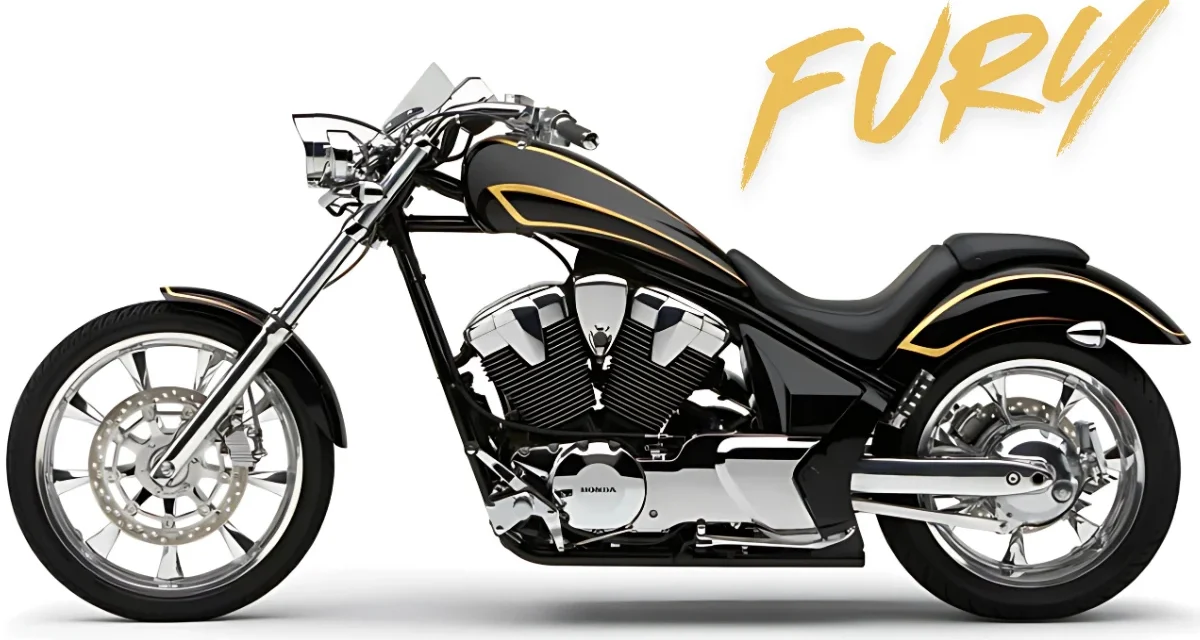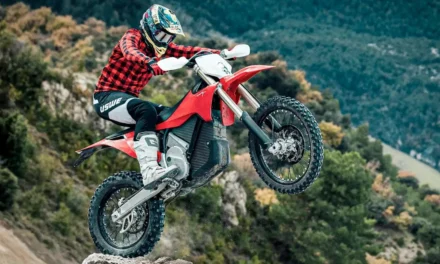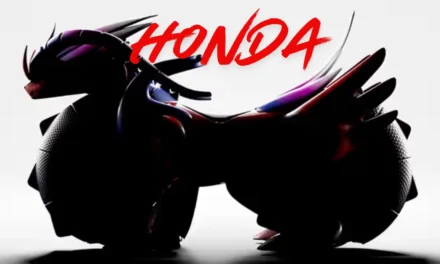When Honda first introduced the Fury VT1300CX at the New York International Motorcycle Show in 2009, it sent shockwaves through the motorcycle world. A mainstream manufacturer—known for reliability—offered a factory-built chopper with a jaw-dropping 32-degree steering rake, a stretched 71-inch wheelbase, and a “hardtail” look that screamed American Chopper vibes.
Fast forward to 2025, and the Fury remains frozen in time, sporting the same specs, same analog gauge, and same halogen headlight it debuted with 15 years ago.
So why has Honda left its boldest cruiser virtually untouched while competitors evolve?
Honda Fury’s Core Appeal
Honda aimed to merge chopper aesthetics with its trademark reliability, building a bike that turned heads without stranding riders on the roadside.
The liquid-cooled 1312cc V-twin engine, borrowed from the VTX1300 line, prioritized low-end torque over horsepower, delivering a throaty rumble perfect for laid-back cruising.
The shaft drive system added practicality, and the hidden rear shock gave the illusion of a hardtail while offering a surprisingly compliant ride.
But the Fury’s design was so extreme, so specific, that major changes risk alienating its niche audience. Owners I’ve spoken to at rallies and online forums (like the passionate Honda Fury Owners Facebook group) often say, “If it ain’t broke, don’t fix it.”
They adore the bike’s head-turning lines and Honda’s bulletproof engineering—even if it means tolerating quirks like a 3.4-gallon fuel tank or a seat that leaves your back screaming after an hour.

Still Stuck in 2010?
While loyalists defend the Fury’s retro charm, many riders argue its lack of updates feels like neglect. Three pain points dominate discussions:
-
Lights Straight Out of the Dark Ages
The Fury’s dim halogen headlight and incandescent turn signals are relics in an LED world. Riders swap stories about upgrading to aftermarket LEDs. “Riding at night with the stock headlight feels like using a candle,” one owner joked.
Brands like Eagle Lights now offer plug-and-play LED kits tailored to the Fury, complete with halo rings—a clear sign Honda’s factory setup isn’t cutting it.
-
Analog Gauges in a Digital World
The Fury’s chrome-trimmed analog speedometer and basic digital odometer feel starkly outdated next to modern TFT displays. Younger riders, accustomed to gear indicators and smartphone connectivity (like Honda’s own Rebel 1100), see the Fury’s dash as a dealbreaker. “It’s like comparing a flip phone to an iPhone,” remarked a rider.
-
Adequate Performance… But Where’s the Excitement?
With 57 horsepower and 73 lb-ft of torque, the Fury’s engine is more of a “steady cruiser” than an “asphalt ripper.” While smooth and reliable, it pales next to the Rebel 1100’s 86 horsepower or Harley’s Breakout, which packs a 1923cc engine.
Cornering clearance is limited, the narrow 90/90-21 front tire feels sketchy in rain grooves, and the suspension struggles with sharp bumps. “It’s competent, not thrilling,” a Texas owner said.
Read: Honda Cuts Horsepower on Motorcycles to Meet Noise Standards
The Fury’s Lonely Niche
The Fury’s closest rival, Yamaha’s Star Stryker, also stagnated before being discontinued in 2017. Both bikes targeted the factory chopper crowd but struggled to keep pace with tech-forward cruisers.
Compared to Harley’s Breakout ($22,499) or Softail Standard ($14,399), the Fury’s $11,499 price tag is a steal—but you sacrifice modern features like digital displays, ride modes, or premium materials.
Even Honda’s lineup overshadows the Fury. The Rebel 1100, with its modern tech and agile chassis, appeals to a broader audience, leaving the Fury as a niche oddity. “It’s a halo bike,” a dealer told me. “We sell a few a year to folks who just want that chopper look without the Harley price.”

Honda’s Strategy: Benign Neglect or Smart Business?
Honda isn’t oblivious to the Fury’s flaws—they’re just prioritizing elsewhere. As the world’s largest motorcycle manufacturer, Honda is funneling resources into high-growth markets (like Asia’s commuter bike segment) and electrification.
The company plans to launch 30 electric models by 2030, and the Fury’s tiny sales volume in the U.S. hardly justifies a costly overhaul.
“Why fix what still sells?” an industry analyst noted. The Fury’s dedicated fanbase keeps demand steady, and Honda’s minimal updates—new paint colors, ABS added in 2014—cost little. Meanwhile, the aftermarket handles the rest.
Aftermarket to the Rescue
The Fury thrives on customization. Owners routinely upgrade seats (Corbin and Mustang are favorites), swap exhausts for a beefier sound, and bolt on LED lights. The lack of storage? Solved with swingarm bags that (mostly) preserve the bike’s clean lines. “The Fury isn’t a finished product—it’s a canvas,” explained a builder on YouTube.
This aftermarket ecosystem lets Honda off the hook. Why invest in a digital dash when riders can install one themselves? For the Fury’s audience, tinkering is part of the appeal.






